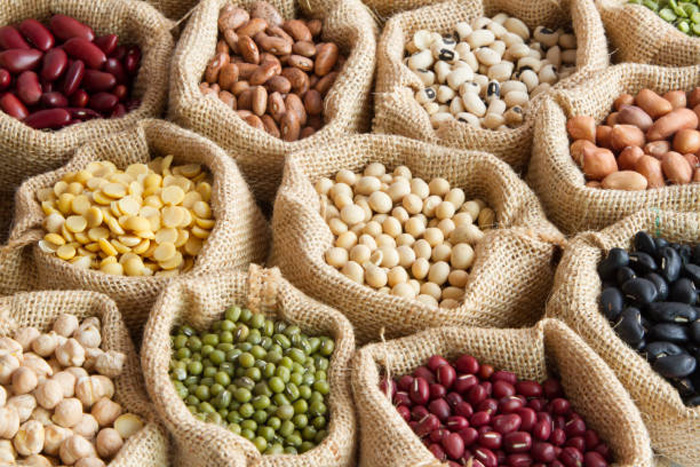As we begin the planting season, saving seed is typically not top of mind. However, crop selection plays a big role in seed saving success. With a little forethought and planning we can continue to grow our favourite crops for years to come, and even pass them down through generations.
Some crops, like corn, beans and squash, readily produce seed that is easy to harvest and save. But be aware that these plants are prone to hybridization, meaning they can cross pollinate, resulting in seed that is not true to type. Hybridization will not affect the current year’s fruit, only the seed inside. So, if you want to know how that funky-looking pumpcchini came about, you have to look back to what you (and your close neighbours) grew the year you harvested the seed.
Commercially produced hybrid seed, such as peaches and cream corn, will produce deliciously sweet, bi-coloured cobs the first year. However, seeds saved from these cobs still hold the original genetics of the parent plants and may produce cobs that are less sweet, uni-coloured or have other less desirable traits. If you plan to save your seed, it’s best to start with non-hybrid types. Also remember that corn is wind-pollinated, so planting corn in well-separated blocks rather than a couple long rows, and keeping prevailing wind directions in mind will minimize the chances of cross-pollination.
You may have suspected that squash, melons, cucumbers, and gourds all belong to the same Cucurbit family. These plants have separate male and female flowers that are insect pollinated. Fortunately, cross pollination, and hence hybridization, can only occur between varieties of the same species. For example, all cucumbers belong to the Cucumis sativus species, meaning that all cucumbers can hybridize with each other. Cucumbers can not hybridize with watermelons, though, because all watermelons are of the species Citrullus lanatus. Soft melons, like cantaloupe, honeydew and muskmelons can hybridize with each other because they are all Cucumis melo species, but they will not cross with watermelons, cucumbers or squash.
In Canada, all squash varieties (summer and winter squash) originate from only four species – Cucurbita maxima, Cucurbita moschata, Cucurbita pepo and Cucurbita argyrosperma. This means that you can grow up to four types of squash – one from each species – while still preventing cross pollination of your favourite dark orange squash and zucchini (unless you’re dedicated to hand pollination). A simple internet search will quickly reveal which species your chosen squashes belong to. Remember, the current year fruits will be normal, but seed saved from them may turn into whacky hybrids that you may or may not like.
So what about other veggies that don’t produce seed, like carrots, beets and onions? It turns out that these plants are biennials, meaning they spend their first year storing energy and nutrient reserves in their large roots or bulbs and use these reserves to produce flowers and seeds the following year. The problem is, the roots are too good to leave in the ground, and if they are left, they don’t survive our cold winters. Fortunately, the solution to this problem is quite simple and lies in those sprouting root crops you have stored in your cellar.
The next time you cut the top off of a carrot, be generous and leave a half inch or more of root on it. Allow the cut end to dry overnight and then place the top in a shallow pan of water making sure it’s not immersed. It won’t take long for green leaves to appear and within a week or two, you will see roots forming. This is the time to transfer the tops into potting soil. Once it’s warm enough, transplant them into the garden and watch them flower and set seed. Keep in mind that carrots can reach 3 – 4 feet tall, so choose your site accordingly. You can do the same with beets. Of course, you can plant the entire root, but why waste a whole carrot or beet when you only need to plant the top? If some of your plants don’t flower, don’t be dismayed – they probably put their energy into regrowing roots. In this case, you’ll probably find a large tangle of new carrots when you dig them up.
For onions, simply place the root ends in potting soil and watch them come alive again. Feel free to harvest the greens as needed, just be sure to not take them all. It takes a long time for onions to flower and set seed, so expect to harvest the seed at the end of the growing season. If you have different types of onions, be sure to keep them separated to avoid hybridization.
For more information and tips on saving seeds, along with an exhaustive list of which squash varieties belong to which species, be sure to check out How to Save Your Own Seeds: A Handbook for Small-Scale Seed Production put out by Seeds of Diversity Canada. You can order this fantastic resource for only $15 (including shipping) from the Seeds of Diversity website.
In the meantime, if you have extra seeds to share and would like to trade them for something you don’t have, be sure to drop by the Community Seed Library located in Artisan Hall at Reimer Concrete and Building Supplies.
This article was written by Laura Reeves for the Stuartburn Emerson/Franklin Local Food Initiative. Laura is a botanist with over 20 years experience. Founder of Prairie Shore Botanicals in Gardenton Manitoba, an avid gardener and seed collector In 2021 PSB began a native plant nursery and now offers a variety of native prairie and woodland plants.




